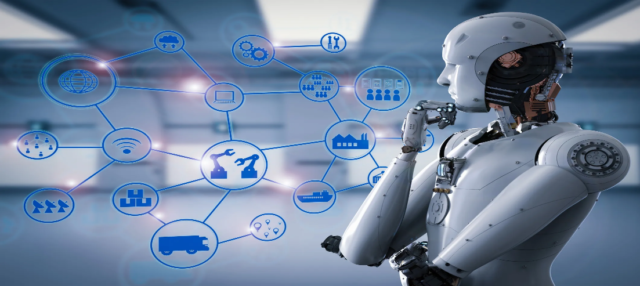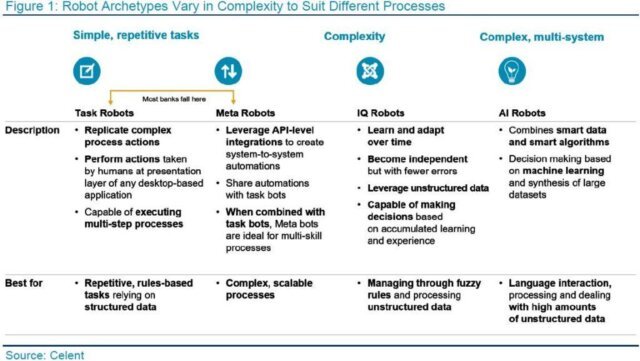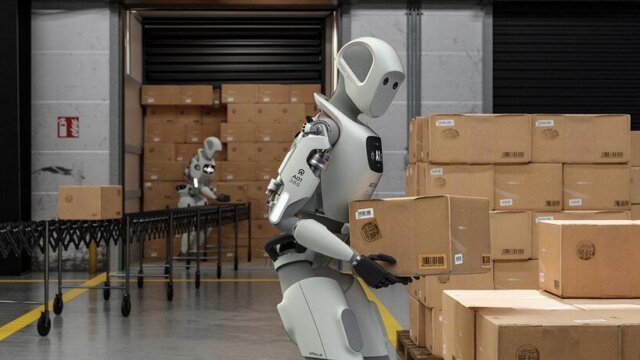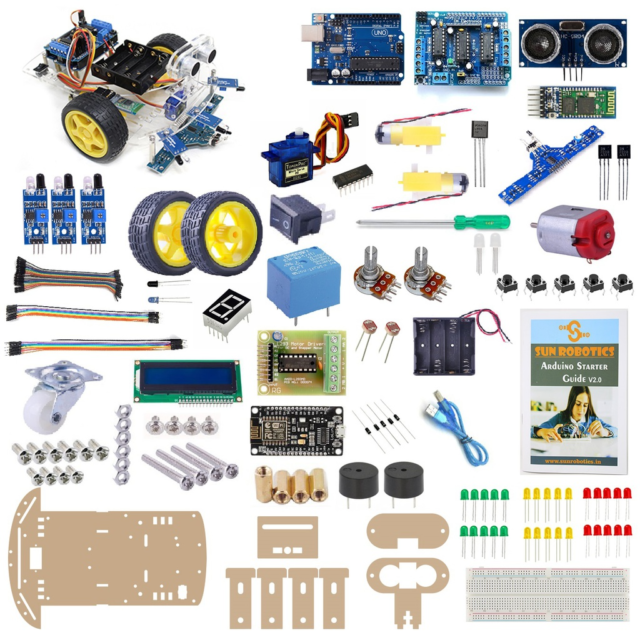
Introduction
Will the robots replace manual labour in the near future? As the robots are rapidly developing and advancing, there is a chance that the robots can take over manual jobs since they are now been integrated in every industry.
For instance, Ford, BMW, Amazon, and GXO are set to explore the humanoid robots in their workspace. Whereas, companies like Apptronik, Agility Robotics, Figure, and Tesla are spearheading the robotic developments.
Over the past ten years, Robotics in the IT Industry has also advanced quickly because of developments in machine learning (ML), artificial intelligence (AI), and automation. Since robotics depends on more and more complex data processing, AI algorithms, and software, the IT sector, in particular, is leading this technological revolution.
The Evolution of Robots and AI
With AI serving as the “brain” and robotics as the “body”, the developments of AI and robotics, from antiquated automatons to contemporary intelligent machines, have seen tremendous breakthroughs, allowing robots to execute intricate tasks quickly and precisely. Modern robots can now see patterns, make judgments instantly, and process complex data because of the advancement of AI and ML.
Case Study:
The Robotic Process Automation (RPA) Implementation – Bank of America
The Bank of America has adopted Robotic Process Automation (RPA) in order to improve its customer service as well as its operational efficiency.
The bank uses a number of robots; for instance, it uses software robots to automate repetitive processes that include transaction processing, data entry, and compliance checks.

In addition to lowering any possibility of human error, the bank, with the help of this automation, frees up its staff members so that they can concentrate on more important jobs.
(Source: https://www.fintechfutures.com/bankingtech/case-study-on-bank-of-america-how-robots-help-serve-and-protect-the-bank)
Robotics in the IT Industry
- Manufacturing
While increasing productivity, robotics also boosts efficiency, improves quality, as well as reduces cost. As robots can work for twenty-four hours, they reduce the downtime and provide high production rates. For instance, automated material handling systems, welding robots, and robotic arms in manufacturing lines.

- Logistics & Supply
Robotics is transforming this industry as some autonomous robots reduce costs while increasing the delivery speed. This can be achieved as the robots optimise last-mile delivery and warehouse operations. Examples of robots in logistics and supply include drone delivery services, robotic arms for packing and sorting, and automated guiding vehicles in warehouses.

- Healthcare
Several robotic surgical systems provide minimally invasive and accurate treatments in the healthcare sector. Additionally, patient outcomes are being improved by the AI-powered diagnostic tools.

Impact of Robotics in the IT Industry
- Job Creation
Significant job prospects in the IT industry are anticipated as a result of the rise in robotics. The need for experts in AI and ML, robotics engineering, and data science will grow as Robots become more complex.
- Automation
Robotics-based automation presents two problems: it boosts productivity but also enhances the possibility of job displacement. Across many industries, robots are being employed to automate high-risk and repetitive operations. Thus, IT workers now have the chance to move into higher-paying positions that are centred on managing, creating, and enhancing robotics systems.
- The Need for New Skills
As robotics becomes more and more integrated into other industries, there is a need for IT workers to upgrade and learn new skills, such as understanding Artificial Intelligence (AI) and Machine Learning (ML), and proficiency in programming languages, etc., to remain competitive as well.
Androids (Humanoid Robots) In the IT Industry
An important development in industrial automation is the incorporation of humanoid robots in technological operations. These robots are designed to resemble human movements and skills.
Robotics in the IT Industry is shifting its focus to using these humanoid robots to address the shortages in labour, improve the effectiveness in operations, as well as carry out several jobs which fall in hazardous or inappropriate situations for human workers. Moreover, these robots have become simpler to train because of the speedy developments in artificial intelligence (AI) and natural language processing. The question is, will these humanoid robots replace manual labour in the near future?
Illustrations of Androids (Humanoid robots) in the IT Industry:
Apptronik
The Texas-based robotics company, Apptronik, introduced its humanoid robot named “Apollo”. This humanoid robot is designed for industrial use.
Furthermore, Apollo is being tested by Mercedes-Benz at its manufacturing plants after making investments in Apptronik for several jobs that include moving certain components and performing quality checks.
The aim is to improve productivity in dangerous and repetitive tasks as well as to address the manpower crisis, i.e., labour shortages.
(Source: https://www.reuters.com/business/autos-transportation/mercedes-benz-takes-stake-robotics-maker-apptronik-tests-robots-factories-2025-03-18/)

Agility Robotics
The robotics industry, Agility Robotics, created a humanoid robot named “Digit”. This robot is designed for handling various materials in different warehouses.
Amazon and GXO Logistics have adopted Digit. The robot showcased its capacity to move certain tote bins. Furthermore, the humanoid robot also navigated various challenges in the company’s warehouses.
(Source: https://apnews.com/article/humanoid-robots-figure-ai-agility-robotics-26f2cdcef4b923f0e44f91799686c8b2)

Robotics in the Education Industry
While education is termed as a service industry, according to recent studies, the education industry can also be termed as a business.
(Source: https://www.indiabix.com/group-discussion/education-industry-is-a-business-these days/#google_vignette)
As a result, the development of robotics has not only enhanced the IT industry, but it has also flourished in the education industry. But how can the developments in robotics benefit education?
Let us uncover the robotics advancements and discover how robotics is related to the education industry.
Robotics Shaping the Future of Learning
Will robots in the classroom inspire future inventors? How do robots help students learn? Recently, robots have emerged as a significant educational tool, revolutionising how students interact and learn about complex subjects. While robots are not intended to replace human educators, the advances in interactive technology and artificial intelligence have made these robots ideal for specific jobs both within and outside the classroom.
Robotics in Education
What exactly is educational robotics? Educational robotics, in simpler terms, is an AI (artificial intelligence) technology that meets the children’s learning needs. This is a newly improved technology-based approach, as it allows the students to have a tailored educational experience. Few educational institutions also allow such educational experiences from the comfort of their home at their own pace. For instance, Byjus.
This way of imparting knowledge in the education industry can enhance the learning experience for both students as well as teachers. These advanced facilities provide students with a high-quality education while relieving the teachers of exhaustion. This is the reason why many schools and colleges are adopting the use of robotics worldwide in their curriculum.
Illustration:
The University of California at Irvine discovered that there can be a great impact of the telepresence robots in classrooms.
This study was developed further when they found out that one of the chronically sick students attended his school with the help of one of the telepresence robots; he suddenly had the stamina and energy of a normal student, which allowed him to participate as well as concentrate on his studies efficiently.
However, before attending the school with the help of this robot, the student was lethargic and completely uninterested in any of the school activities. Only when he started to attend the school with the telepresence robot was it found out that he became curious and wanted to attend the school for the entire day.
It is certainly good to provide these children with a chance to participate in their classrooms with ease. The telepresence robot aims to offer the child socialisation.
(Source: https://www.zdnet.com/article/chronically-ill-kids-attend-school-via-telepresence-robots/)

Benefits of Robotics in Education
- Enhanced Social Ability
As educational robots resemble humans, it means that they include eyes, lips, as well as a few other facial features that allow them to mimic human emotions. These abilities of the robots will help the student in learning stronger social skills. These robots use the appropriate reactions with the use of technology that allows them to interpret facial and speech expressions. With these human-like traits and behaviour, it further allows these robots to focus on the emotional development of the students. This ultimately enables the robots to teach subjects while also assisting the younger children in learning how to interact and recognise the emotions of others.
- Promotes Innovation & Creativity
Robotics in education offers the students a rare chance and a unique opportunity to learn by doing it physically. This means that it allows them an in-person learning and exploration experience. The educational robots can encourage creativity and innovation as they offer tasks that encourage the students to think out of the box, explore and solve several problems.
- Encourages Collaboration
Adopting these projects using robotics usually calls for teamwork. This helps the students develop their communication and cooperative skills. It further fosters a sense of shared responsibility and achievement.
- Affordable Teaching Alternatives
By relying on robots to complete fundamental functions, schools avoid mining a restricted talent pool for teachers and further stretching their budgetary limits. While teaching shortages have put pressure on existing educators to serve more and more children, robots in education are relieving some of their burden.
Examples of Educational Robots
- Dash and Cue Robots – Wonder Workshop
Wonder Workshops’ STEM learning robots, Dash and Cue, make studying in the classroom more interesting.

- “Softbank Robotics” NAO Robots and Pepper
Softbank is the company behind Pepper, a high-tech humanoid robot and NAO, the robot used in the L2TOR project. Although both have been used in retail and healthcare, Softbank believes that these innovations might be effectively implemented in classroom learning.

- Code.org and Scratch
Through interactive projects, Code.org and Scratch are online resources that help students with robotics and coding.
Advanced Robotics Kits for Education
The Advanced Robotics Kit for Students unleashes the potential of experiential learning with ease! With everything that your child needs to design, construct, and program their very own personalised robots, this all-inclusive, advanced kit is the ideal DIY project to unlock the potential in robotics and coding. Moreover, the kit also provides Bluetooth and Wi-Fi to make it more interesting.
The Advanced Robotics Kit has servo-motors, several sensors, including light, sound, and motion, an easy-to-use microcontroller, and several sturdy construction elements. It is appropriate for different learning levels as it supports various coding languages like Python and C++. With more than 150 parts to experiment with, it’s an excellent tool that blends enjoyment with education.
The Kit helps students investigate real-world STEM issues while fostering innovation and critical thinking through an engaging and interactive pathway into robotics and artificial intelligence. It fosters collaboration and creativity, making it perfect for both classroom and home use, helping them innovate several projects.
Therefore, you can prepare your children for their future careers with this all-in-one learning solution, which is amazing from all angles.

Future of Robotics – A Conclusion
By providing a special fusion of technical ease and human touch, the robots will improve service quality and efficiency rather than replace human interaction. Human-robot Collaboration, in which people concentrate on strategic decision-making while the robots perform daily activities, is the way of the future for robotics in the IT industry. IT specialists will program, design, and secure these intelligent systems.
As machine learning (ML) and artificial intelligence (AI) continue to evolve day by day, educational robots will become more complex and capable of adaptive learning.
References:
https://www.wired.com/story/boston-dynamics-led-a-robot-revolution-now-its-machines-are-teaching-themselves-new-tricks
https://www.irobot.com/en_US/irobot-home-app.html
https://apnews.com/article/humanoid-robots-figure-ai-agility-robotics-26f2cdcef4b923f0e44f91799686c8b2
https://www.uti.edu/blog/robotics-and-automation/application-of-robotics
https://blogs.mtu.edu/globalcampus/2023/02/robots-in-the-workplace
https://www.ft.com/content/7c3dafa8-ffb9-4ca8-b677-ab3cc2afbdcb



